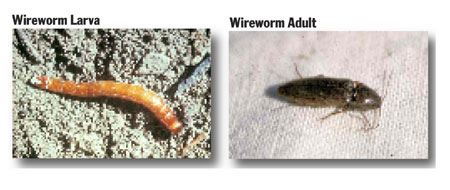Neglecting To Scout ForWireworms May Be A Mistake
URBANA, ILL.
Large infestations of wireworms in two separate
Massac County fields have been reported
this spring, said University of Illinois
Extension entomologist Mike Gray.
“Ron Hines, an independent crop consultant
in southern Illinois, has reported large infestations
of wireworms in two separate fields devoted
to no-till corn production in 2010,” Gray
said. “Ron placed wireworm bait stations in
both fields and after digging up the baits, detected
an average of 35 wireworms per trap.”
Gray said the established threshold for wireworms
is generally considered to be the detection
of one wireworm per bait station. If this
threshold is exceeded, producers are encouraged
to consider the use of a soil insecticide applied
at planting, preferably one labeled for an
in-furrow placement.

“Rescue treatments are not an option,” he
said. “Heavily infested fields often require
replanting areas most affected
due to significant stand reductions.”
The use of a soil insecticide is encouraged
during replant operations, he
added. Although insecticidal seed treatments
confer some protection against
wireworms, intense infestations may
overwhelm the ability of seedlings to
withstand feeding injury.
Prolonged wet soil conditions and cool temperatures
tend to enhance the prospects for increased
wireworm damage to cornfields.
Wireworms will continue to feed in the seed
zone as long as soil temperatures remain cool.
Δ